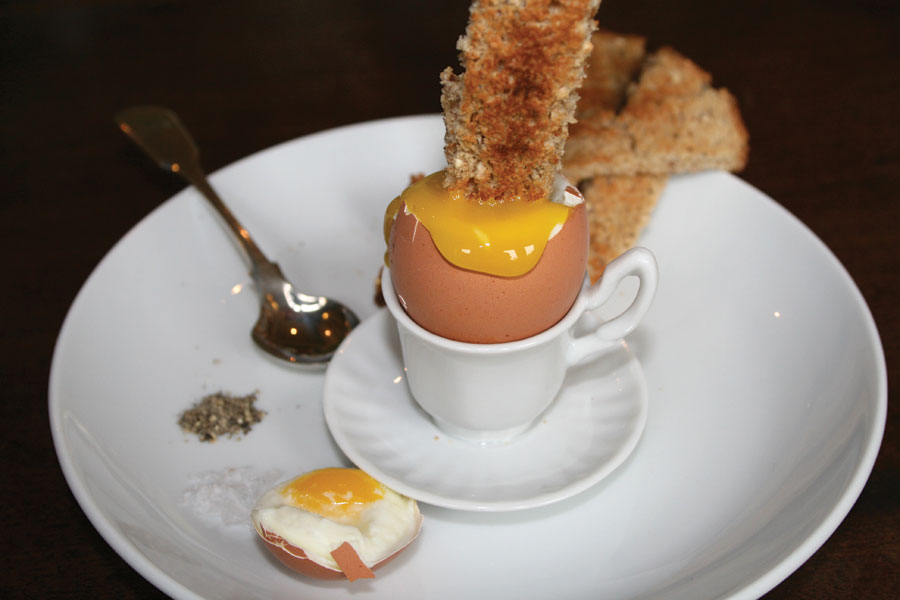Tom’s Top Tips for the Tastiest Eggs

Planting Greens for you and your Hens
No one can deny that the delicious orange yolks from your own hens’ eggs is a sight to behold. Allowing your hens to free range in your garden, feeding on fresh grass is the best way to get those wonderful yolks, but this isn’t always practical in the winter when the grass stops growing. Feeding your hens green vegetables helps them produce these amazing eggs and keeps them happy, so why not try growing a few veggies at home and both of you benefit?
Winter isn’t the best time for sowing crops, but if you start planning now, there are a number of greens that you can grow at home to feed your hens over Winter.
Swiss chard
Soak the seeds for 15 minutes in warm water to give them a head start, then plant them 1/2″ deep in previously water soil. I plant around 6-8″ apart to allow the plants to grow well as they can reach quite an impressive size. Water well for the first week or so and protect the emerging seedlings from slugs and snails. The seeds are in a cluster, so you will get at least a couple of plants from each seed.
You can also plant them into individual seed trays and plant out when the seedlings are large enough to handle.
When the plants reach 8′ high, start by pulling a couple of leaves from each plant. Pull the stalk at the base of the plant and they should snap off easily. They are classed as a cut and come again crop, so only take a few leaves from each plant at a time and they will crop over several months.
Swiss chard is very tolerant of cold weather, but if it is very cold where you live, they will benefit form a cover of horticultural fleece to give them added protection. It also grows well in a pot, placing 3-4 plants in a 14″ pot. There are many different types of Swiss Chard, but my favourite is ‘Bright Lights’ which has dark green leaves and thick stems coloured red, orange, yellow and purple. They also make attractive plants in a mixed border.
Kale
Kale is a member of the cabbage family and is very tolerant of cold temperatures. Most garden centres now have this winter vegetable as small plug plants available now. For around £2-£3 you can pick up a tray of kale and that should last your hens for the winter.
Kale isn’t demanding, but can grow quite tall, so place them in a sheltered spot or make sure you stake the plants when they reach 12″ + high to prevent them being blown over in the wind.
Plant the plug plants deeply, up to the first layer of leaves and this will help anchor them down. Firm the soil in really well and they don’t do well if rocked around and the roots are disturbed.
Water well for the first couple of weeks and the plants soon start producing dark leaves, that can be harvested in the same way as Swiss chard.
Varieties to try – Red Russian is one of the quickly to start producing leaves. Nero di Toscano produces large dark green leaves and plenty of them.
Salad Mache or Lambs Lettuce
These little plants grow well in cold weather, but run to seed when it gets too warm, so perfect for growing as a winter crop.
Plant the seeds thinly 1/2″ deep and allow 6″ between plants. Water well and they will soon form little rosettes. Harvest a few leaves from each plant and they will continue cropping over winter.
They are also called Corn salad.
Any cut leaves should be placed into a wire wild bird feeder, similar to the ones that you can put suet blocks into. This keeps the greens off the floor and allows your hens to peck at the leaves.
Dedicating a small area of your garden or a few pots to vegetables, will keep your hens happy all winter. Don’t forget that planting a few extra plants and you can be picking fresh winter crops for your kitchen too!
If you have any questions, please contact me at Tom@Omlet.co.uk
This entry was posted in Chickens
5 replies on “Tom’s Top Tips for the Tastiest Eggs”
When I had a horse, I used to grow wheat grass for him in ice cream boxes – now I have chickens, last winter I grew wheat grass in plastic fruit tubs, in a heated propagator – I can get 8 tubs in it, and the end product, which takes about 10 days from seed to beakable, and is devoured enthusiastically. love from Bridget, Scarlett O’Henna, Angelina (poses like a ballerina), Ginger and Blackie Featherfoot.
[…] Winter isn’t the best time for sowing crops, but if you start planning now, there are a number of greens that you can grow at home to feed your hens over Winter…. click here to read more! […]
Thanks for the tip about putting cut greens in a suet feeder. And yes, my hens like chard. I’ll try planting the other greens.
Thanks for the reminder – will get greens going this week for the winter!!!!
Hello.